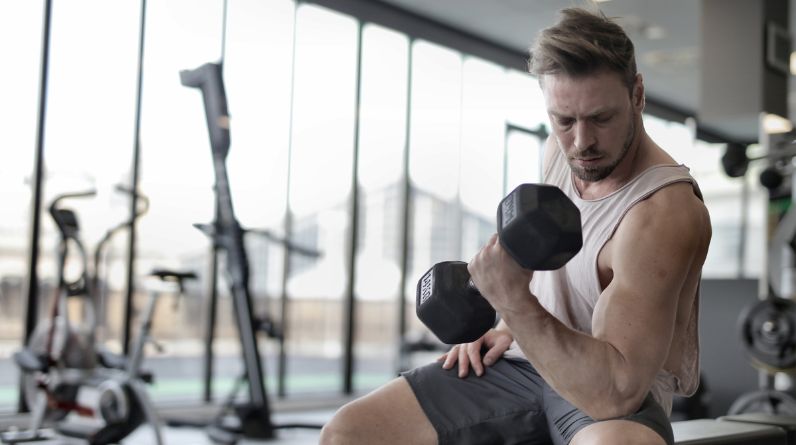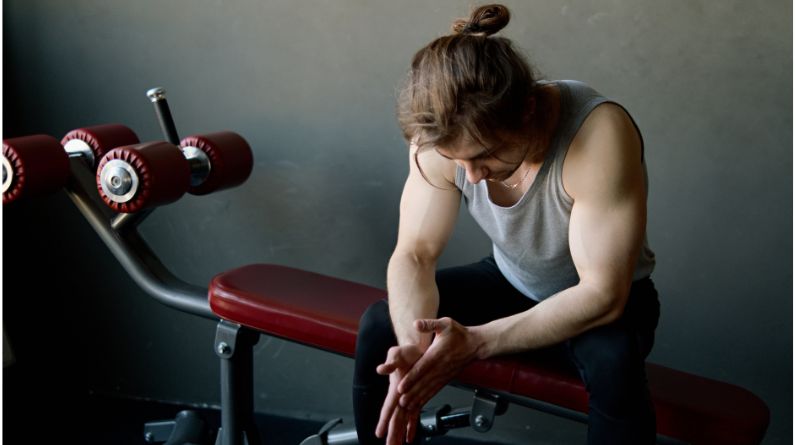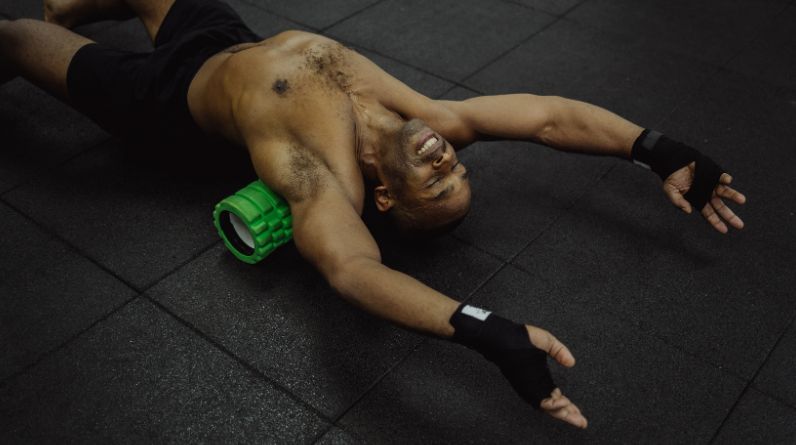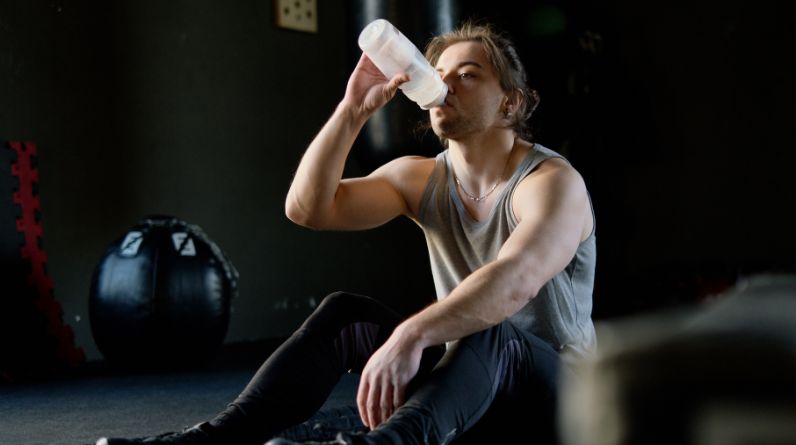
As you step into the world of bodybuilding, your dedication to sculpting a strong and powerful physique is undeniable. However, amidst the excitement of lifting weights and chasing gains, there’s a vital aspect that deserves your utmost attention: injury prevention. The art of injury prevention is not only a safeguard for your progress but also a testament to your commitment to long-term health and success in the realm of bodybuilding.
Understanding the Importance of Injury Prevention
Injury prevention is more than a precautionary measure; it’s a fundamental pillar of effective and sustainable bodybuilding. Whether you’re a seasoned athlete or a novice lifter, incorporating injury prevention techniques into your training regimen is non-negotiable. Here’s why:
1. Preservation of Progress: Injuries can disrupt your training routine, setting you back and undoing the gains you’ve worked so hard to achieve. Injury prevention ensures consistent progress without unnecessary setbacks.
2. Longevity in Bodybuilding: The pursuit of your bodybuilding goals is a journey that spans years, even decades. Injury prevention allows you to engage in your passion for the long haul, ensuring that you continue to reap the benefits of your efforts.
3. Enhanced Performance: When your body is functioning optimally, you can perform exercises with better form and technique. This translates to improved muscle engagement, strength gains, and overall performance.
4. Physical Well-being: Beyond the gym, injury prevention contributes to your overall physical well-being. By prioritizing injury prevention, you reduce the risk of chronic pain and health issues associated with improper training.
Techniques and Precautions for Injury Prevention
In the dynamic world of bodybuilding, where the pursuit of strength and aesthetics intertwine, injury prevention stands as a sentinel guarding your progress. Here, we delve deeper into the techniques and precautions that form the bedrock of a comprehensive injury prevention strategy:
1. Dynamic Warm-Up: Preparing Your Body for Action
A dynamic warm-up is akin to a curtain rising on the stage of your workout, signaling the commencement of a performance that demands peak physical readiness. By targeting the muscles and joints that will be actively engaged, a dynamic warm-up primes your body for the challenges ahead. Dynamic stretches, such as leg swings, arm circles, and trunk rotations, effectively increase your heart rate, generating an influx of blood to the working muscles. This heightened blood flow carries oxygen and nutrients, igniting metabolic pathways and enhancing the overall functionality of your musculoskeletal system.
2. Proper Form and Technique: The Architectural Blueprint
In terms of injury prevention, proper form and technique serve as the architectural blueprint that ensures the structural integrity of your body. Imagine each exercise as a building, with your body as the foundation, joints as the support beams, and muscles as the walls. Mastery of proper form guarantees that this architectural marvel stands tall and resolute. Whether it’s maintaining a neutral spine during a deadlift or engaging your core during a squat, correct posture and alignment distribute stress evenly across muscles and joints, preventing undue strain. To fine-tune your form, employ visual aids like mirrors, or seek guidance from a knowledgeable training partner.
3. Gradual Progression: The Symphony of Adaptation
The human body is a remarkable symphony of adaptation, capable of responding to progressive challenges with astonishing resilience. Gradual progression orchestrates this symphony, allowing your muscles, joints, and connective tissues to harmonize their responses to increasing demands. Resisting the allure of heftier weights prematurely, and instead, incrementally elevating the intensity of your workouts, is the hallmark of gradual progression. This measured approach not only minimizes the risk of overuse injuries but also fosters the gradual strengthening of the supporting structures that underpin your bodybuilding journey.
4. Rest and Recovery: The Crucible of Renewal
While the exhilaration of lifting weights can be addictive, rest and recovery form the crucible in which your gains are forged. Adequate rest periods between workouts provide your body with the essential time it needs to recover, repair, and grow. Overtraining, on the other hand, raises the curtain on a cascade of potential issues, from heightened fatigue to compromised form. These factors conspire to increase your vulnerability to injuries. Recognizing the value of rest as an ally in injury prevention is key to sustaining your bodybuilding endeavors.
5. Balanced Nutrition: Fueling Your Resilience
A balanced diet is the nutritional cornerstone that nourishes your body’s innate capacity to fend off injuries. Each macronutrient and micronutrient contributes to your body’s holistic function, supporting processes that range from muscle repair to immune response. Protein fuels the reconstruction of muscle fibers, carbohydrates replenish glycogen stores, fats provide energy and support cellular health, while vitamins and minerals act as catalysts for vital biochemical reactions. A well-rounded diet ensures that your body’s internal environment is optimized for injury prevention and recovery.
6. Hydration: Quenching Your Muscular Thirst
Hydration is not a mere afterthought but a linchpin in the delicate balance of your body’s functioning. Proper fluid intake ensures optimal muscle function, lubrication of joints, and efficient temperature regulation. During workouts, the importance of hydration amplifies, as dehydration can compromise muscle contractions, impair coordination, and increase the risk of cramps. Sipping water throughout the day and particularly during exercise becomes an invaluable tool in your arsenal of injury prevention.
7. Mobility and Flexibility: Unleashing Range of Motion
Imagine a door that can swing fully open without resistance, granting access to what lies beyond. Similarly, mobility and flexibility exercises unlock your body’s range of motion, enhancing joint health and minimizing the risk of strains and tears. Incorporating regular stretching routines cultivates pliability in muscles and tendons, allowing them to move gracefully through their intended trajectories. The improved elasticity gained through mobility work serves as a protective shield against injuries that may arise from abrupt or uncontrolled movements.
8. Cross-Training: The Symphony of Balance
Variety is the maestro that conducts the symphony of balanced muscle development and injury prevention. Cross-training introduces diversity to your workouts, preventing overuse injuries that can occur from repetitively targeting the same muscle groups. By engaging in a variety of exercises, you foster overall physical fitness, strengthen weak points, and mitigate the risk of muscular imbalances that may lead to injuries down the line.
9. Listen to Your Body: The Sentinel Within
Your body is a sentient guardian, equipped with an intricate alarm system that communicates its state with subtle cues. Paying heed to these signals is paramount in injury prevention. Discomfort or pain during exercises should never be ignored or masked; rather, they should be interpreted as your body’s way of signaling a potential issue. Learning when to modify an exercise, reduce weight, or even halt a movement altogether is a skill that empowers you to navigate your bodybuilding journey safely.
10. Professional Guidance: A Beacon of Knowledge
In the realm of bodybuilding, knowledge is your most potent weapon against injuries. Seeking professional guidance from a certified personal trainer or healthcare expert can be invaluable, especially if you’re new to the world of fitness or have unique health considerations. These experts can tailor a training plan that aligns with your goals while factoring in your body’s limitations and strengths, ensuring a safer and more effective bodybuilding experience.
Conclusion
Injury prevention is not a mere addendum to your bodybuilding journey; it’s the cornerstone upon which your strength, progress, and long-term success are built. By incorporating these techniques and precautions into your training regimen, you’re investing in your own well-being and setting the stage for a thriving, injury-free bodybuilding experience. As you lift, stretch, and grow, let the principles of injury prevention be your steadfast companions, guiding you towards a future of strength, vitality, and unwavering progress.
Frequently Asked Questions
1. Can I Build Muscle with Injury Prevention-Focused Workouts?
Absolutely, injury prevention-focused workouts are not just compatible with building muscle, they can actually enhance your muscle-building efforts. When you prioritize injury prevention, you ensure that your body is functioning optimally, allowing you to consistently engage in challenging workouts without setbacks. By focusing on proper form, controlled movements, and gradual progression, you create a foundation for sustainable muscle growth. Injury prevention practices help you avoid the pitfalls of overtraining or incorrect technique that can hinder progress. Remember, effective muscle building requires not just lifting heavy weights, but lifting them safely and efficiently.
2. Should I Prioritize Flexibility Training in My Injury Prevention Routine?
Flexibility training is indeed a crucial component of any injury prevention routine. Improved flexibility translates to increased joint mobility, which is essential for performing exercises with proper form and minimizing the risk of strains or sprains. When your muscles and tendons have a broader range of motion, they are less likely to become strained during workouts. Flexibility training, such as dynamic and static stretching, supports healthy muscle function and joint integrity, allowing you to move more freely and with reduced risk of injury.
3. Can I Still Push My Limits While Practicing Injury Prevention?
Absolutely, injury prevention is not about avoiding pushing your limits; it’s about doing so safely and progressively. Pushing your limits is an integral part of muscle and strength development. Injury prevention practices enable you to challenge yourself without jeopardizing your well-being. By gradually increasing the intensity of your workouts, monitoring your form, and paying attention to your body’s signals, you can continue to strive for higher levels of strength and fitness while minimizing the risk of overexertion or injury.
4. Are Warm-Up Sets Necessary for Injury Prevention?
Warm-up sets are essential for injury prevention, especially before engaging in more intense exercises. These sets gradually increase blood flow, body temperature, and heart rate, preparing your muscles and joints for the upcoming demands. Warm-up sets also activate your nervous system, enhancing communication between your brain and muscles. This readiness reduces the risk of injury by ensuring that your body is primed for the main workout. Skipping warm-up sets may lead to compromised performance and an increased risk of strains or other injuries.
5. Is Foam Rolling Beneficial for Injury Prevention?
Absolutely, foam rolling is a valuable tool for injury prevention. Foam rolling, also known as self-myofascial release, involves applying pressure to specific points on your body to release muscle tension and improve blood flow. This practice can alleviate knots and trigger points, improving overall muscle function and reducing the risk of imbalances that can lead to injuries. Incorporating foam rolling into your warm-up or post-workout routine helps maintain healthy muscle tissue, increase flexibility, and promote proper movement patterns.
6. Can Improper Footwear Lead to Injuries in Bodybuilding?
Yes, wearing improper footwear during bodybuilding exercises can indeed lead to injuries. Proper footwear provides crucial support and stability, especially during weightlifting movements. The right shoes offer arch support, cushioning, and grip, ensuring that your feet are properly aligned and protected. Inadequate footwear can lead to compromised form, balance issues, and increased stress on joints and muscles. When lifting heavy weights or engaging in compound movements, such as squats or deadlifts, wearing appropriate footwear is essential to prevent accidents and maintain proper biomechanics.
7. Can Injury Prevention Techniques Be Applied to Cardiovascular Exercises?
Absolutely, injury prevention techniques are universal and apply to all forms of exercise, including cardiovascular workouts. Just as with strength training, injury prevention during cardiovascular exercises involves proper warm-up, controlled movements, and gradual progression. Paying attention to your body’s alignment, using proper technique, and listening to its signals are fundamental principles that contribute to injury prevention across various exercise modalities. Whether you’re running, cycling, or engaging in other forms of cardiovascular activity, prioritizing injury prevention ensures a safe and effective workout.
8. Should I Incorporate Balance and Stability Exercises for Injury Prevention?
Yes, incorporating balance and stability exercises into your routine is highly beneficial for injury prevention. Balance and stability exercises, such as single-leg stands, stability ball exercises, or yoga poses, enhance proprioception – your body’s sense of position and movement in space. Improved proprioception translates to better coordination, reduced risk of falls, and enhanced joint stability. These exercises target smaller stabilizing muscles, which are often neglected but play a crucial role in maintaining proper movement patterns and preventing injuries.
9. Can Lack of Sleep Affect Injury Prevention Efforts?
Yes, sleep is a critical factor in injury prevention efforts. Sleep is when your body repairs and regenerates tissues, including muscles, tendons, and ligaments. A lack of sleep hinders your body’s ability to recover from the micro-damage that occurs during workouts and daily activities. Insufficient sleep can lead to muscle fatigue, decreased coordination, and reduced focus – all of which increase the risk of accidents and injuries. Prioritizing adequate sleep contributes to better recovery, optimal muscle function, and overall injury prevention.
10. Is It Normal to Experience Mild Soreness During Injury Prevention-Focused Workouts?
Yes, experiencing mild soreness during or after injury prevention-focused workouts can be normal, especially if you’re transitioning to a new routine or incorporating new exercises. This type of soreness, known as delayed onset muscle soreness (DOMS), is a result of the muscles adapting to new challenges. Mild soreness is generally a positive sign that your muscles are responding to the workout stimulus. However, it’s important to distinguish between mild soreness and sharp, intense pain. Mild soreness usually subsides within a couple of days, while severe pain may indicate an injury. Always listen to your body, give it proper rest and recovery, and adjust your workout routine accordingly.



